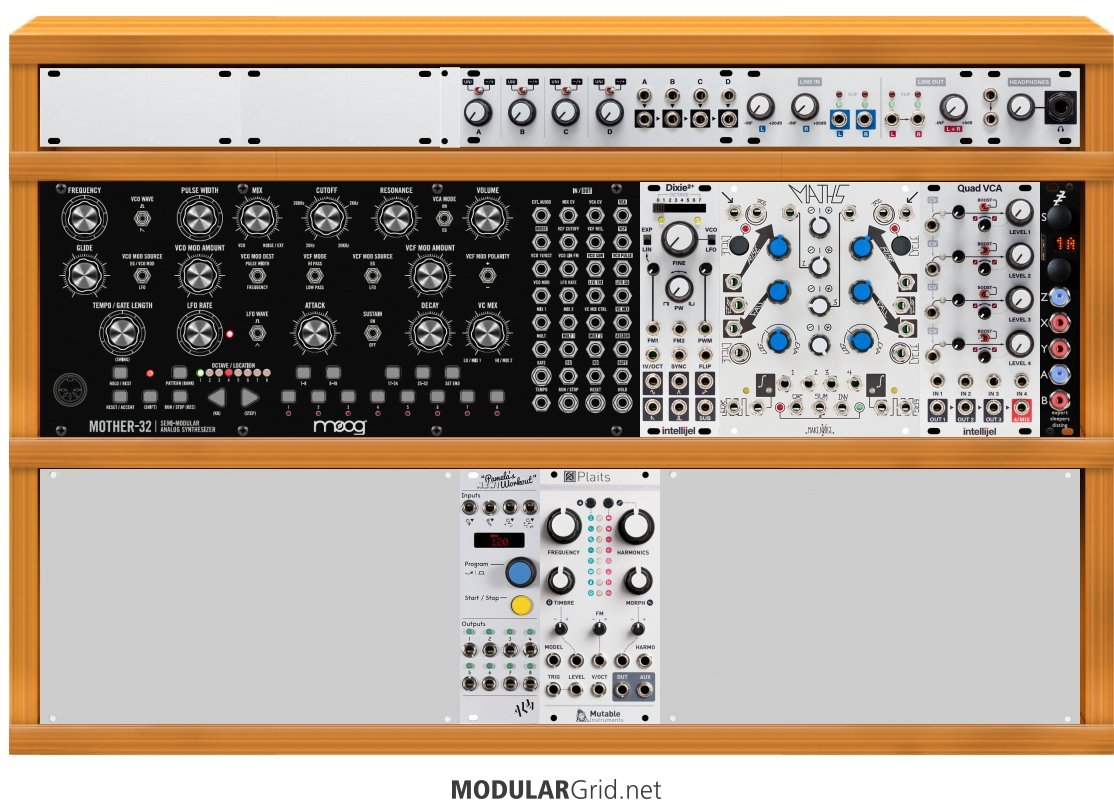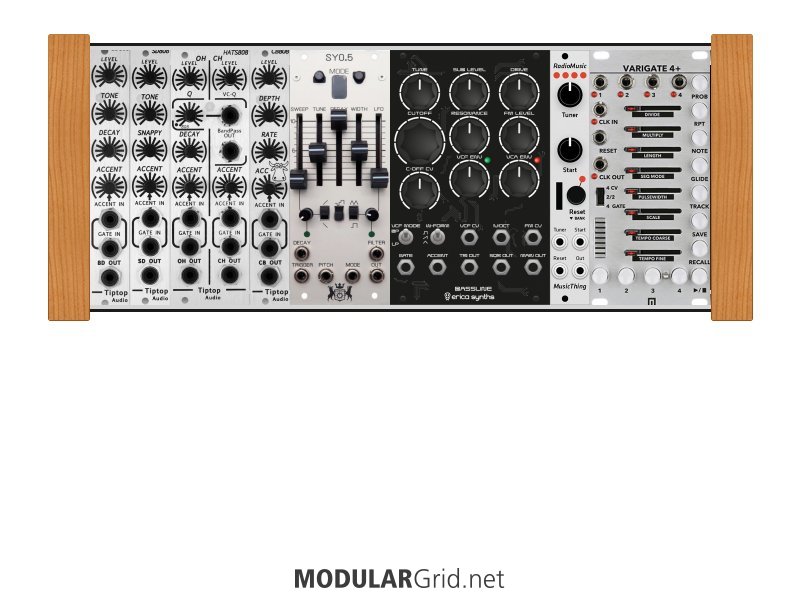OK...going off of the earlier PM, I went ahead and moved this over to the public forum instead. This is what you started with:

...and this is my final result:
This is a markedly different build, although it still has a lot of the existing modules. However, the original design was just unworkable and obtuse. It was missing a LOT of necessary functions (fixed), numerous utilities (also fixed), had a lot of "why?" modules (fixed), and a bad case of "sexy module syndrome". I'm not surprised that the original was that sonically unimpressive, actually. Lots of useful things...but only IF the other parts were there, which they weren't. Here's what we have:
Row 1: No. Totally reworked this so that your entire "voice" is on this row. Disting on left for various control functions. DPO replaced by the VOID complex VCO, Gravitational Waves. Telharmonium and STO replaced with Codex Modulex clones of the Braids and Plaits; in this case, you could also do two Braids or two Plaits if that seems better. Submix via Veils clone, then a Rings clone for filtering/resonance modeling. Your ring mod, btw, is now part of the VOID Gravitational Waves. The LxD follows as a stereo pair of LPGs. After this is the Morphagene, allowing it to function as a "voice source" instead of consigning it to the bottom rows where your effects processing needs to be. The QPAS is next, which lets the Morphagene feed this directly OR the Morphagene can feed into two channels of the A-138s alongside the two LPG outs, and this stereo mix can then feed into the QPAS. Similarly, you can reverse the patching of the LxD and the Rinks, which then allows you to feed the LPG "plooks" into the Rinks and have that function as a "resonant cavity" for their output.
Row 2: Also no. The original row was a hodgepodge of functions, very easy to get lost in. In this build, your "percussives" are on the left, in the form of a Delptronics LDB-2 and its expander. This drum module uses the time-tested TR-808/606-type drum sound set. Next to that, I added a Tiptop ONE for one-shot samples, then the X-PAN is used for a stereo submix for these. The rest of the row is 100% modulation: another Veils clone for VCA processing of modulation signals, the Wogglebug, then an Erica Black Modulator for an extra LFO, sample and hold, and noise. Maths follows, then a pair of expanded Xaoc Zadars, as the original really had nothing in the way of proper envelope generation. And since the Zadars can loop, this also lets them serve as user-definable LFOs in addition to envelope generation. At the end of this row is a DC-coupled triple attenuverter/mixer, allowing you to manipulate and/or mix your modulation outputs.
Row 3: I cut the original WAY back to a single Rene, plus its Tempi. This should lower the confusion factor considerably. The Euclidean Circles got added to this row, as well as a Starling GateSeq, which is an interesting logic-driven combo of normal and probabilistic sequencers. All of this is intended to feed the percussives above it, but there's ample output so that some of the timing can be routed elsewhere. Tempi/Rene next, then effects, which is where the Erbeverb and Mimeophon wound up. More about that in a bit.
Row 4: I put the Shared System utility row here. The reason will be obvious momentarily.
Row 5: The Brains/Pressure Points combo was retained. I added a much more flexible and intutive clocking system to its left, in the form of 4ms's Quad Clock Distributor and its expander. THIS is what a master clock should be for a large system such as the one you've acquired, and it's capable of outputting numerous clocks with various divisions and multiplications under CV control. Note also that since most things that can take external clocks will know what to do with a +5V pulse, this module pair can actually serve as your studio's clocking "nexus", besides handling all of the internal clocking duties imaginable. On the other side of the Pressure Points, I put in a Tiptop MISO; the intention here is to give you a CV/modulation control point located conveniently between your manual controller and your mixer so that you can route critical modulation paths through this and adjust them there, improving the control paradigm considerably. Next, I put in a stereo compressor/limiter, which should prove extremely useful on your stereo drum path. Then, a Toppobrillo Stereomix. This is a proper performance mixer, allowing CV over level, panning, and AUX send. You can manually mute on this, plus you also have a cue send which allows you to audition channels offline for changing patches or settings during a performance. This is also where the Erbeverb comes in; since it uses the same mono-in/stereo-out that the Stereomix wants to see for its AUX send/return, you can now use the Erbeverb as a global reverb...probably its best use. As for the Mimeophon, this can either be used as a thruput for another stereo bus (either from the "voice" row altogether, the Morphagene, or the percussion bus) or it can be used as a final processor for the entire stereo mix. With these co-located by the Stereomix, this also reduces the ergonomic issues required in controlling all aspects of the final mix. And the output on the Shared System tile is in between the Stereomix and the Mimeophon, making it convenient to either module.
OK, so...it's not all black now. Mmmm...well, eh. Trying to go with all of your modules as one color at the expense of functionality is a very bad idea. It would be like specifiying that you want all of the hammers in your piano redone in purple felt because...PURPLE. Ergo: expensive and pointless. Since you didn't exactly have a functional instrument with the "paint it black" approach, that was actually the very first thing I discarded from the original, primarily because it's a pointless limitation. You should be more concerned with what's behind the panel, to start with, then whether or not you can make sense of the panel as a whole so that programming and playing the instrument isn't a brain-shattering chore. Anything beyond that makes no sense.
I also worked to synergize functions here, which was another thing missing from the original build, and also something that was almost certainly contributing to the build's annoying non-usefulness. Everything is now grouped while still maintaining the up-left/down-right general flow, although it should be very easy to patch outside of that flow pattern when necessary. So...timing is down and left, audio generation is across the top, drums are immediately above the timing/sequencing, modulation sources are central and to the right, sequencing is lower and central, and output + processing is lower-right.
But a lot of the previous modules got chucked out. And rightfully so, I think; in some cases, they didn't provide "bang for the buck" and took up space that could be used in better ways. And in other cases, they were obvious culprits in the confusionality you were describing. But by doing all of that culling, THAT opened up a large amount of space that allowed me to rebuild this...with actually quite a few of the existing modules, really...with the proper additions that will actually allow the modules that remain from the original build to outperform what they were capable of in the original. So, in the long run, this makes a helluva lot more sense to me as an instrument than it did before, and it should be far more capable than its prior incarnation might've led you to believe!



